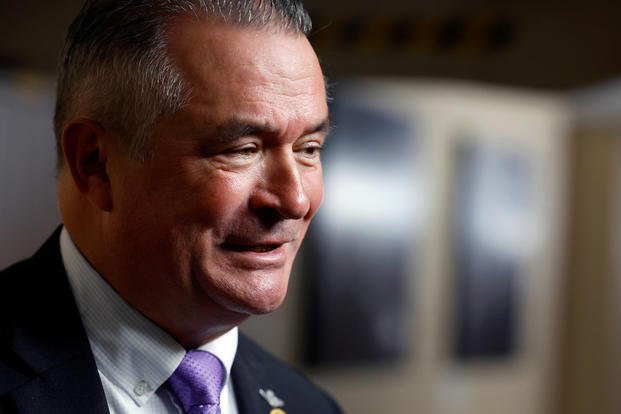
WASHINGTON — A bipartisan chorus of House Armed Services Committee members expressed profound unease Friday about the Trump administration’s management of the military’s cyber operations.
The concerns, expressed at a hearing of the committee’s cyber panel, revolve around several matters, including the firing in April of the general who led U.S. Cyber Command and the National Security Agency, as well as cuts to the command’s workforce and what members called inadequate readiness.
Some Democrats also said they are unhappy about a halt in March to U.S. cyber operations and planning against Russian threats and what they worry is a retreat from countering certain forms of disinformation online.
“It’s time to stop talking about preparing for conflict [in cyberspace] because we are already in one,” Rep. Don Bacon, R- Neb., the panel’s chairman, said in an opening statement. “I, for one, believe that it’s now time that we start acting like it. However, recent actions by this administration raise concern for me as to whether they truly believe it.”
Firing of top officer
In April, President Donald Trump fired Air Force Gen. Timothy Haugh, then the commander of U.S. Cyber Command and director of the National Security Agency. Multiple reports at the time said Trump fired Haugh at the insistence of conspiracy theorist Laura Loomer, who has publicly criticized Haugh for being “handpicked by” Gen. Mark Milley, former chairman of the Joint Chiefs of Staff. Trump and his allies have said Milley was disloyal to Trump during the president’s first term.
Bacon and other members of the subcommittee suggested that the firing of Haugh has destabilized U.S. cyber operations.
“Removing him from the cyber battlefield in this way served absolutely no national security interest,” Bacon said. “All this did was help China, Russia, Iran and North Korea do what they could not do themselves.”
Democrats agreed.
Rep. George Whitesides, D- Calif., said Congress has received no detailed justification for the firing. He called it “utterly unacceptable,” “crazy” and “highly dangerous.”
Rep. Ro Khanna, D- Calif., the panel’s ranking member, said, “We should have answers. We expect answers.”
Workforce cutbacks
Haugh’s replacement, the acting chief of U.S. Cyber Command and the National Security Agency, is Army Lt. Gen. William Hartman.
Hartman testified on Friday that his command is reducing its workforce by between 5% to 8%, even as he said its workload has increased.
“Successful cyber operations,” he said, increased by about 25% from 2023 to 2024 and are on pace to expand further in 2025.
“Our operations continue to grow in scale, speed and complexity,” Hartman said.
Freshman Rep. Sarah Elfreth, D- Md., whose district borders Fort Meade, where Cyber Command and NSA employees work, was critical of the cutbacks.
Hartman said more junior employees will step into positions formerly held by departing workers.
“It will be difficult and it will require leadership,” he conceded.
Bacon said he shares Elfreth’s concerns about the reductions, noting, “We are in a daily cyber war with Russia and China.”
Readiness questions
Bacon also said he is “very concerned” about training and readiness at Cyber Command.
Hartman said the command only recently attained a preparedness status known as “foundational.”
Foundational readiness is the term for the basics that must be in place for a military unit to then demonstrate more specific tactical and operational skills.
“The fact that it took us more than a dozen years to reach this point is not something to celebrate,” Bacon said. “To succeed in the cyber domain, we need far more than ‘foundational readiness,’ and I am particularly interested in hearing from you what you need to create and sustain a high level of readiness across the cyberwarfare enterprise.”
Challenge from Russia
Members also heatedly discussed a report in March that Cyber Command had halted, amid negotiations with Russia to bring peace to Ukraine, offensive cyber operations and planning against Russia. The Pentagon publicly denied at the time that such a freeze had occurred at all.
Bacon said he has been told that the cessation lasted just one day and he added that such a halt is not unusual during negotiations.
But Rep. Eugene Vindman, D- Va., said the Pentagon’s denial was “an outright lie. It was at least misleading, and that’s not what the American people deserve.” Vindman also pressed Hartman on what steps the command is taking to counter disinformation in cyberspace.
Disinformation “is a key mechanism that our adversaries are using in the cyber realm” via social media platforms, Vindman said.
“It’s not necessarily changing ones and zeros in the digital space to mess with systems, but it is messing in a much more pernicious way with the way people think about things,” he said. “It’s an influence operation.”
Hartman said Cyber Command is not in the business of countering disinformation, at least not directly.
“Cybercom has never executed operations to counter disinformation, but we have and remain laser-focused on malicious cyber actors operating in foreign space that would support those operations,” he said.
___
©2025 CQ-Roll Call, Inc., All Rights Reserved. Visit cqrollcall.com.[1] Distributed by Tribune Content Agency, LLC.
© Copyright 2025 CQ-Roll Call. All rights reserved. This material may not be published, broadcast, rewritten or redistributed.

